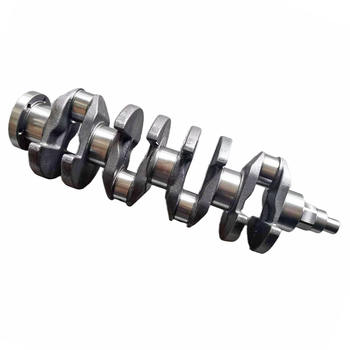The Basics: Crankshaft Stroke Length and Engine Performance
Have you ever wondered how the length of a crankshaft's stroke affects the torque and power output of an engine? In this article, we'll dive into the fascinating world of engine mechanics and explore the relationship between crankshaft stroke length, torque production, and power curves. By understanding these concepts, you'll be better equipped to optimize your engine's performance.
What is Crankshaft Stroke Length?
The crankshaft stroke length, also known as simply "stroke," refers to the distance a piston travels within a cylinder during one complete engine cycle. This measurement is critical to an engine's overall performance, as it directly impacts the engine's torque and power output.
The Connection Between Stroke Length and Torque
Here's the thing: longer stroke lengths result in greater torque production. The reason is simple: as the piston travels farther, it displaces a larger volume of air and fuel mixture. This increased displacement generates a higher force on the crankshaft, resulting in more torque. In fact, many experts agree that the stroke length has an even more significant impact on torque than the engine's bore size.
Stroke Length and Engine Design
Engineers must carefully consider the stroke length when designing engines, as it affects not only torque production but also the engine's size, weight, and overall efficiency. Long-stroke engines tend to produce more torque at lower RPMs, making them ideal for heavy-duty applications such as towing and hauling. On the other hand, short-stroke engines typically provide higher revving capabilities and better fuel efficiency, making them a popular choice for sports cars and high-performance vehicles.
The Relationship Between Stroke Length and Power Curves
Now that we understand how stroke length affects torque, let's explore its impact on power curves. Power is a function of torque and engine speed (RPM), and engine power curves illustrate the relationship between these variables. As the stroke length increases, the engine's power curve shifts to the right, meaning the engine produces its peak power at higher RPMs. Conversely, shorter stroke lengths result in power curves that peak at lower RPMs.
Optimizing Your Engine's Performance
To optimize your engine's performance, you'll want to ensure that its stroke length is well-suited to your specific needs and driving style. For example, if you frequently engage in heavy-duty tasks or prefer a more relaxed driving experience, a longer stroke length may be beneficial. On the other hand, if you prioritize high-RPM performance and fuel efficiency, a shorter stroke length might be the way to go.
Practical Applications: Adjusting Stroke Length for Optimal Performance
Conclusion: The Importance of Stroke Length in Engine Performance
In conclusion, crankshaft stroke length plays a crucial role in determining an engine's torque production and power curve. By understanding the relationship between stroke length and engine performance, you can make informed decisions about engine modifications and optimizations. Whether you're seeking improved towing capabilities, better fuel efficiency, or enhanced high-RPM performance, the stroke length of your engine's crankshaft is a crucial factor to consider.




